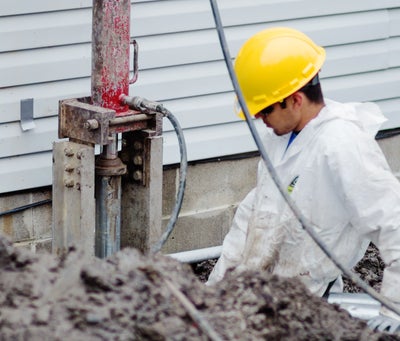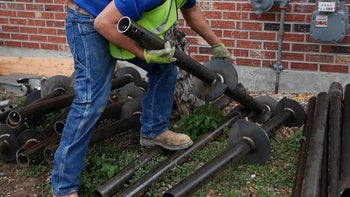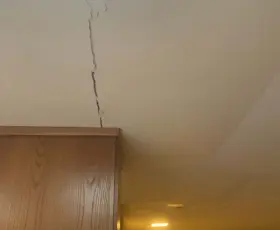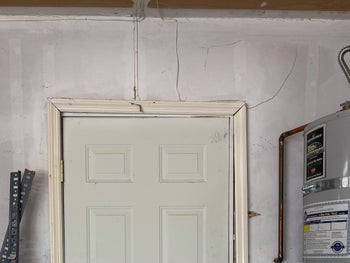DIY Foundation Repairs: The Truth You Might Not Want To Hear
Table of Contents
1. Common Signs Of Foundation Problems
2. Why DIY Foundation Repairs Are Not A Good Idea
3. The 3 DIY Foundation Repairs Most Likely To Go Wrong
4. Think Carefully Before Attempting A DIY Foundation Repair
5. DIY Foundation Repair Isn’t Worth the Risk: Trust Bay Area Underpinning
DIY Foundation Repair Isn’t Worth the Risk: Trust Bay Area Underpinning
Today, thanks to popular TV shows and sites like YouTube that are chock full of DIY videos, more homeowners than ever are tackling home improvement projects themselves. Some do it because they want to save money, while others just like the idea – or perhaps the challenge – of doing it themselves. There’s certainly nothing wrong with this.
Painting walls, installing a new kitchen floor, or a complete bathroom remodel can be a rewarding experience that brings a couple – or even an entire family – together.
Most DIY home improvement projects can be successfully completed after doing a little research and gathering supplies from your local hardware store.
This is not the case with foundation repair.
Common Signs Of Foundation Problems
One of the most common questions we get asked is, “Do I have a foundation problem?” Well, you might if you’re experiencing any of the following…
If you suspect that your home has foundation problems, a better solution is to contact a registered, experienced structural or geotechnical engineer and have them come out for an inspection and then, based on that, write up a repair plan.
- Sloping floors
- Ceiling cracks
- Cracks in walls
- Windows and doors that stick
Why DIY Foundation Repairs Are Not A Good Idea

Foundation repair is complex and competency requires years of on-the-job experience. Yes, there are some repairs homeowners can successfully do themselves. Crack repair using either crack injection epoxy, or carbon fiber reinforcement is one such example. However, correcting foundation settlement via underpinning (also called piering) or performing other repairs to lift, level, and stabilize a foundation are not DIY projects.
If a DIY project isn’t successful, a professional foundation repair contractor will need to not only perform the original repair, but perhaps repair any damage caused by the DIY attempt as well.
Of course, when you hire a reputable, established foundation repair contractor, you get a warranty on the repair. When you DIY, there is no warranty. This can sometimes be a deal breaker when it comes to a real estate transaction.
The 3 DIY Foundation Repairs Most Likely To Go Wrong
Over the years we’ve been called to intervene and repair many DIY projects gone wrong. Three common DIY foundation repairs that fail are…
- Carpentry lift – Carpentry lift involves lifting the home off the foundation and then using lumber that has been shaped into giant wedges or shims to relevel the home. This might level the home temporarily. However, it’s not a permanent solution because it doesn’t address the problem related to the soil, which is usually why the foundation settled to begin with.
- Self-leveling compound – Floating a self-leveling compound over the subfloor to make it more level is a DIY foundation repair commonly done prior to installing new flooring, which needs a level plane. This is a quick, cheap cosmetic fix that not only doesn’t address the real problem, but could even make it worse because self-leveling compound just adds more weight to a slab that’s probably already too heavy for the soil under it.
- Concrete haunches – This, like spreading self-leveling compound over a subfloor, does nothing except add more concrete to the foundation. Adding additional weight to problem soils means the foundation will settle even faster. That’s the opposite of what you want.
Think Carefully Before Attempting A DIY Foundation Repair.
The idea of saving money appeals to everyone. However, an unsuccessful DIY foundation repair could mean even more money spent if a professional foundation repair contractor needs to come out and repair both the original problem, and the damage caused by the DIY fix as well. Since no DIY repair is free, any money spent on materials needed for the DIY foundation repair will be lost.
If the inspection finds that there has been some differential settlement that needs to be corrected, and the foundation is able to be repaired (rather than replaced), the most likely solution will use either push piers or helical piers. The safe, proper installation of these products requires the use of hydraulics along with in-depth training. That’s why only foundation repair contractors trained in the installation of these piers have access to them.
DIY Foundation Repair Isn’t Worth the Risk: Trust Bay Area Underpinning
While the DIY approach may seem cost-effective and convenient for minor home repairs, foundation issues are not among them.
The risks associated with improper foundation repair can lead to more significant, costly problems down the line, including jeopardizing the structural integrity of your home.
Instead of taking this gamble, it’s wise to rely on professionals who have the expertise, equipment, and experience to do the job right.
Bay Area Underpinning stands out as a reputable company with a proven track record in effectively addressing foundation problems.
We encourage you to prioritize the safety and longevity of your home by scheduling a free inspection with us today. Let our experts provide the peace of mind and quality service your home deserves.
More Resources
Publish Date:
Last Modified Date:

Our Locations
2333 Courage Dr. Suite C
Fairfield, CA 94533
1161 N Fair Oaks Ave
Sunnyvale, CA 94089



